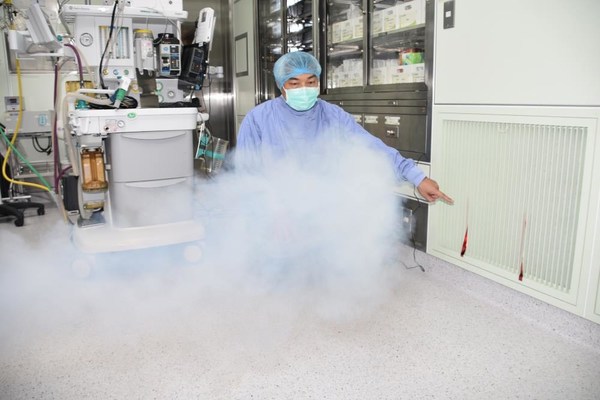CCH Sees 20% Performance Improvement with Balancing between Epidemic Prevention and Energy Management
TAIPEI,Feb. 2,2021 -- The global COVID-19 pandemic means medical facilities on the frontlines of epidemic prevention are all thinking about ways to prevent a breach. They must not only look at emergency response measures,but also at adjusting existing spaces,medical equipment,and environments to reduce the risk of infection among patients and medical personnel. Increasing the rate of air exchange inside a hospital may reduce infection risk,but it also impacts theenergy efficiency targets. This is a major challenge facing hospitals that don't want to compromise on either epidemic prevention or energy management.

To reduce the rate of hospital-acquired infections (HAI) and meet its energy efficiency targets,Changhua Christian Hospital (CCH) refurbished the existing operating roomsat its main hospital in accordance with the "Guidance on Infection Control for Surgery on Suspected or Confirmed COVID-19 Patients" issued by the Taiwan Centers for Disease Control. Each operating room can now switch between negative or positive pressurization as necessary. Positive pressurization can be used when there is no risk of aerosol infection. For suspected or confirmed patients the room can be switched to negative pressurization. To meet the goal of infection control,CCH also set up separate lines of movement for patients,medical personnel,and contaminated materials to prevent cross-infection. With the help of TUV Rheinland,the CCH engineering team also conducted an evaluation of internal/external risks and the existing energy management and monitoring system,and an energy data collection and analysis mechanism was established using the ISO 50001:2018 energy management system. The EC plug fanschosen for the positive/negative pressurization system were found to be at least 20% more efficient than existing fans and satisfied the goal of reducing HAI.
"We often discover clients' innovations in energy management even before the introduction of ISO 50001 energy management systems," says Chi-Hwan Lin,a Senior Project Manager with the Systems Department at TUV Rheinland. "Without a proper understanding of energy management systems,however,it is more difficult to plan,measure,and assess such improvements in a systematic manner. As a result,well-intentioned energy efficiency improvement proposals are often implemented and produce improvements in efficiency that cannot be assessed from a business management perspective or on their synergies. New improvements may even lead to new and unnecessary energy waste. This is very unfortunate."
The new version of ISO 50001:2018 requires businesses to examine internal and external matters in their environment,and assess the risks and opportunities. Improved data collection can help define factors such as material energy-using equipment and energy plans. An effective monitoring and measurement plan then ensures that energy performance and the performance of the energy management system are on track for the meeting of set targets. Following the introduction of the energy management system and the PDCA management cycle (Plan-Do-Check-Act),CCH now collects and analyzes data on existing energy improvement projects.CCHis able to review the functional performance and energy consumption of the ventilation systems in existing operation rooms through data collected from energy-using facilities,which enables it to make further improvement on existing spacesand optimize the balance between function and energy through third-party verification.
"If the pandemic shows no signs of easing,the automation of equipment and processes to reduce the risk of infection and ensure continuity of operations will become the future trend," says Lin. "The increased energy costs from automation along with the government push on green energy and carbon reduction will become an emerging challenge for businesses in 2021."
TUV Rheinland Taiwan began providing energy management systems in Taiwan in 2012. It is a third-party certification body for energy management systems (ISO 50001) and carbon management (ISO 14064-1 and ISO 14067). TUV Rheinland has extensive international experience in the integration and auditing of management systems and carbon management in different industries. In the past,TUV Rheinland has provided vendors located in China,Vietnam,Indonesia,Thailand,the Philippines,Cambodia,Myanmar,and Malaysia with energy management or carbon management services,in industries such as steel,machinery,automotive,electronics,information technology,solar power,chemical engineering,textiles,footwear,furniture,healthcare,retail logistics,tourism and travel,higher education,and traffic management. These services have helped enterprises meet requirements set by local authorities,international buyers,or for internal management.